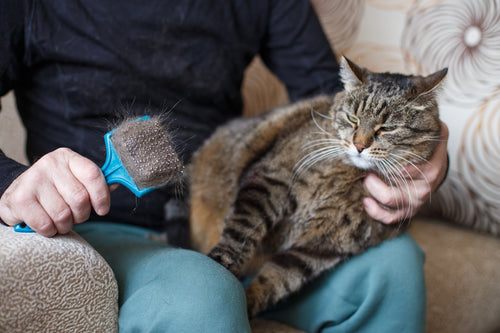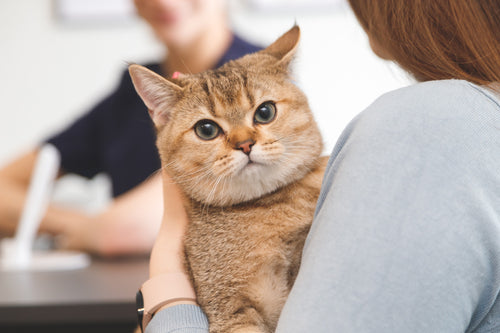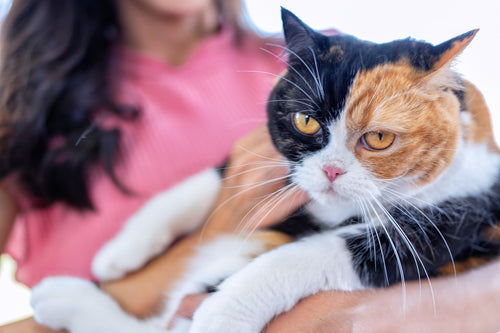This past year has been full of adjusting to “new normal” of social distancing and safety protocols, and many of us have had to adopt a more DIY lifestyle. Maybe you’ve rocked one of the infamous quarantine haircuts, or perhaps you prefer to let your hair grow rogue. Either way, someone had to figure out what to do about Fido’s extra furry look in between visits to the groomer.
Learning how to groom your dog at home is a practical skill to learn, pandemic or not. Not to mention, it can be a pleasant bonding experience between you and your pup—what dog doesn’t like some extra attention and affection? Before you reach for the clippers, though, it’s important to make sure you know the do’s and don’ts of at-home grooming.
Dog Grooming 101
Grooming is important when it comes to maintaining your dog’s cleanliness and appearance. There’s more to it than that, though—regular brushing can help to reduce shedding and remove dead hair, dirt, and dandruff. It also gives you a chance to check for abnormalities in the skin, nails, teeth, ears, and eyes.
According to Dr. Neil Marrinan of Old Lyme Veterinary Hospital, only 10 percent of the work that goes into grooming is actual bathing, brushing, and hair and nail trimming. The other 90 percent of the work involves establishing a sense of trust through a reliable ritual, and lots of positive reinforcement.
It may take some time for your furry pal to get used to being touched in certain spots, so add to your grooming ritual gradually over time instead of diving in all at once. Establish a predictable series of steps, so your pup feels confident and comfortable knowing what’s coming next. Offer plenty of treats and attention to reward cooperative behavior, too.
Pet Honesty’s Salmon SkinHealth Chews can also give your dog’s skin and coat an extra boost by reducing shedding and promoting a shiny, soft coat.

Brushing
Brushing is one of the main components of dog grooming, for both short and long-haired breeds. Ideally, your dog’s coat should be brushed every other day (or longer sessions a few times a week) to remove dirt and debris and prevent matting. It also activates your pup’s natural oils, promoting a sleek, shiny coat.
Make sure you’re using the proper brush for your furry friend, since different coats have different care needs. For example, you wouldn’t treat a Poodle’s curly coat the same way you would treat the long, sleek hair of a Collie.
Make sure to brush from the skin to the tips of hair all over the body, not just the top layer of the coat. Brush in the direction the hair grows. Be especially mindful of commonly missed areas with lots of friction, such as behind the ears, in the “armpits,” the base of the tail, and the paws.
Your dog should be content to sit and be brushed. If he seems uncomfortable, don’t force it. Take a break, and try again later. Signs of pain or discomfort may be an indicator that you’re not using the right brush, and the goal is to minimize any negative associations with grooming.
Bathing
Generally speaking, canine bath time should occur about once a month—with enough brushing, baths become less necessary. Bathing too frequently can actually be counterproductive, as it strips natural oils from your dog’s coat and can dry out the skin. Of course, an extra bath could be necessary if your pup has spent some time rolling around in the mud, or is especially smelly after an intense play session.
Use a high quality shampoo to protect your pup’s skin and coat. It may even be beneficial to dilute the shampoo so it’s easier to rinse out completely. Rinse your pup twice to make sure you’ve completely removed the shampoo, since leftover shampoo or conditioner could attract debris and irritate the skin.
Always brush before bathing, to remove excess dirt and avoid dirty bathwater. Additionally, never brush a wet coat, as many brushes can pull at the hair and skin. Keep water away from the ears, nose, and eyes. Water in the ears can lead to infection, and water in the nose can lead to discomfort, sneezing, and coughing.
If your dog is dealing with skin allergies or wounds, consider Pet Honesty’s Allergy Itch Relief Shampoo which relieves itchy skin and eliminates odors.

Hair Trimming
In general, pet haircuts should be left to the professionals. After all, sharp tools and moving targets don’t necessarily make the best pair. If your dog is in need of some trimming and going to the groomer isn’t an option, you can do some maintenance trimming ONLY if you and your pup feel comfortable.
For example, if your dog has hair that has begun growing over his eyes, it may be time for a trim. Comb the hair forward, and trim so Fido can see clearly again (no, we’re not talking about giving Fido bangs).
If your dog has furry feet, you trim the hair that grows between the paws. This is especially important during the winter to prevent ice buildup between the paws.
It may be tempting to go for the quarantine buzz cut look, but you should never shave your dog’s coat—even during the warm summer months. Dogs naturally regulate their temperature, and shaving the fur would only mess with that system. Shaving can also make dogs more prone to sunburn and damage the hair follicles.
When it comes to DIY care for your dog’s coat, stick to regular brushing, and basic trimming only when necessary.
Nail Trimming
A full-on puppy pedicure isn’t necessary, but regular nail trimming can prevent ingrown nails and infections (and protect your floors and furniture). Some dogs’ nails are naturally maintained with regular outdoor exercise or long walks on concrete, but others will likely need a trim at least once a month.
If you can hear your dog’s nails along the floor, you know it’s time for a trim. Not only do long nails scratch your floors or snag your carpet, they can also make it uncomfortable for your pooch to walk.
With the right tools, make sure your dog is calmly sitting in a sturdy spot and gently pull the paw forward or backward—never to the side. Clip a little bit at a time, because going too far could be painful. Avoid the pink area, as this could cause bleeding. The point where the nail starts to curl should be the stopping point.
No matter what, don’t rush any steps of the grooming process. Be patient; it’s better to take a break and try again later than to rush and make a mistake. Choose a safe, calm, well-lit spot and use the grooming time to bond with your pup. Of course, don’t forget the treats at the end!
Sources:
https://be.chewy.com/home-pet-grooming-cheat-sheet/
https://be.chewy.com/health-grooming-dog-grooming-5-things-you-should-never-do/
https://www.akc.org/expert-advice/vets-corner/dog-grooming-at-home/
https://www.petmd.com/dog/care/evr_dg_diy-tips-for-grooming-dog-at-home







